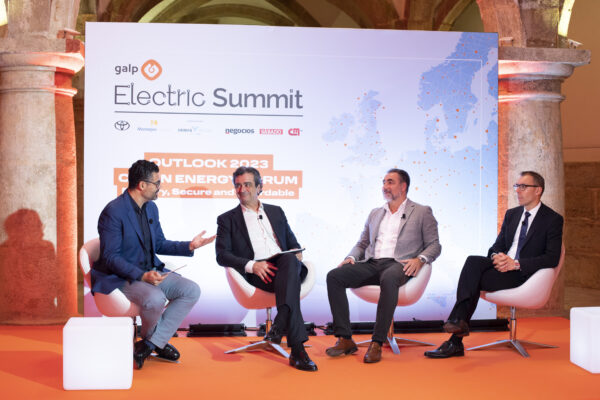Portugal has more electrical chargers per car than Norway
Financial assistance is already available to help people buy electric vehicles. But there needs to be more. So said those who took part in the panel discussion “The state of sustainable mobility in Portugal and Europe”. In order to encourage more Portuguese motorists towards e-mobility, more priority should be placed on increasing the range of cars on offer at the lower end, and prices should be brought down to the level of cars with internal combustion engines.
When it comes to purchasing an electric car, what’s the biggest concern for consumers. Price? Fuel supply? Henrique Sánchez, the chairman of the UVE – Association of Users of Electric Vehicles, used this conference to say that there are multiple issues, taking into account the fact that the e-mobility bubble has already burst. He concedes that the first motorists to own electric cars – he himself has had one for 11 years – “had a lot of trouble to get where we are today.” Now, however, anyone can weigh up the possibility of purchasing an electric car. The first thing to consider is the price. “They cost slightly more, and until the industry adapts and creates vehicles which cost the same as a conventional car, we will have to resort to public policies, fiscal benefits and incentives to purchase.”.
Such assistance does exist, he said, “although for private individuals they are below the European average.” The value of the incentive given for the purchase of a light passenger electric vehicle is four thousand euros, while the average figure in Europe is six thousand euros. He also feels the range of cars available at the lower end of the market is somewhat lacking, since car makers began by electrifying their higher-end vehicles.
The second issue relates to charging points. There are now over 7000 points where electric vehicles can be “fuelled”, and over 1110 of these are fast, superfast and ultrafast. “There are over 6000 points for what we call opportunity charging, such as for example, in a shopping mall car park.”
Despite this relatively high number, Henrique Sánchez feels there needs to be more, since around 7000 100% electric vehicles have been sold since the start of the year, which extrapolates to a market share of around 10%. “If we count 100% electric cars and plug-ins, this share rises to 20%.”
Charging network will be mainly public
Shedding light on the charging issue, João Matos Gomes, the head of the Electric Mobility Business Unit at Galp, used a precise statistic: in Portugal there is one charger for every 10 vehicles. Norway, Europe’s leader in electric mobility, has one for every 30 vehicles. The difference, he explained, lies in the charging support network in these countries. “Portugal will always be public network country because only 20% of houses in Portugal have a parking space.”
This market configuration problem is challenging companies to create alternatives. “One of these is the opportunity charging we’ve just mentioned. Then there’s charging as per need: you’re going on a 200 km trip and you need ultrafast charging. That’s where Galp comes in, creating a network.”
According to figures disclosed by João Matos Gomes, one quarter of all electric charging points are the result of Galp investment and is managed by the brand. “We have the duty to continue to grow this network. As well as growing physically, we are making it grow in terms of service quality.” More than energy, which is considered a by-product, João Matos Gomes says Galp sells time, in other words, the availability to charge.
Galp’s head of the Electric Mobility Business Unit told the conference that there is still what he calls a “technological encounter”, insofar as with ultrafast chargers, for example, there is a small portion of vehicles which can benefit from all the potential. “Therefore, the standardised price is competitive.” João Matos Gomes further explained that a form of technology only becomes standardised when it exceeds 15%-18% in terms of the adoption curve. Galp estimates that this should happen in the next decade.
Forecasts have been exceeded
Two years ago, the European Parliament (EP) set the goal to reduce decarbonisation by 2030. The industry felt that 30% would be reasonable, the European Commission proposed 35% and the EP approved an end goal of 37,5%. “We’re now talking about a 55% cut in emissions”, said Helder Pedro, the secretary-general of the ACAP – Portuguese Automobile Association and Chairman of the Liaison Committee for the ACEA – European Automobile Manufacturers’ Association. It must be a coordinated effort.
The automobile industry has been a part of the solution, and is the sector which invests the most in R&D in the European Union, and is even 20 percentage points ahead of the pharmaceutical industry. Helder Pedro warned, “But to achieve these targets, public authorities must do their bit. And we feel that they haven’t been,” particularly in two areas. Firstly, in increasing tax incentives for companies, but also for private consumers, via direct incentives to purchase. He concluded “We can’t discriminate based on people’s social status, and their inability to access a certain technology which we are wanting to be disseminated throughout Europe.”











